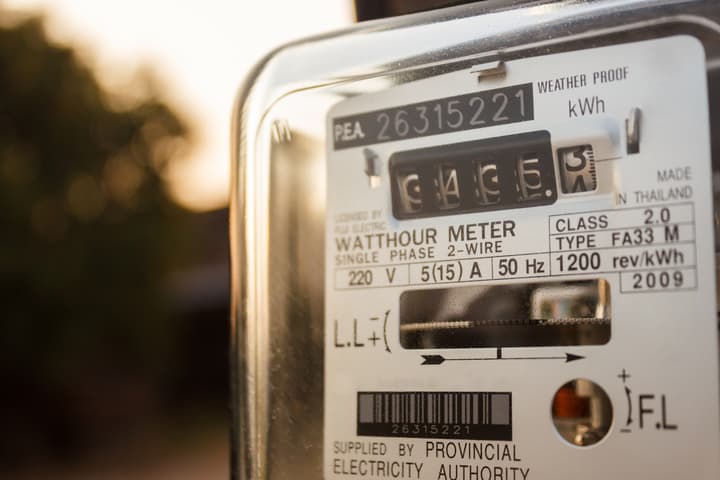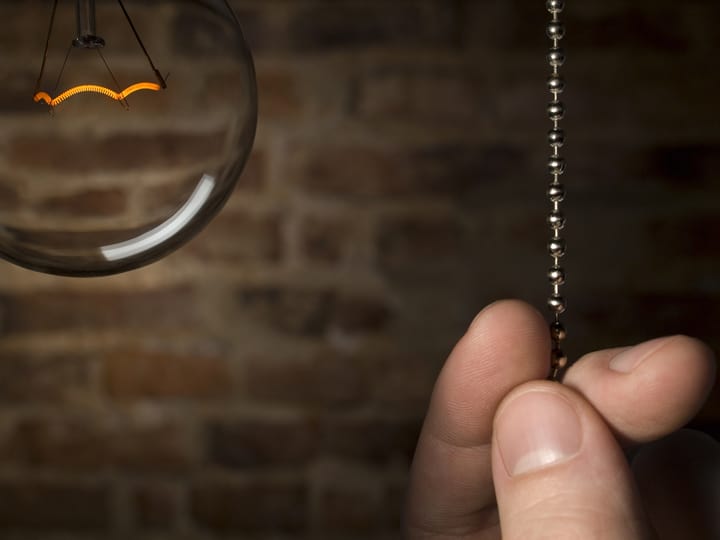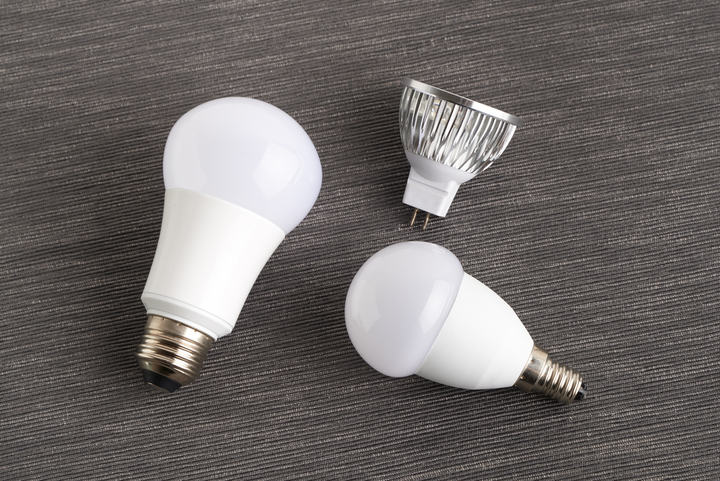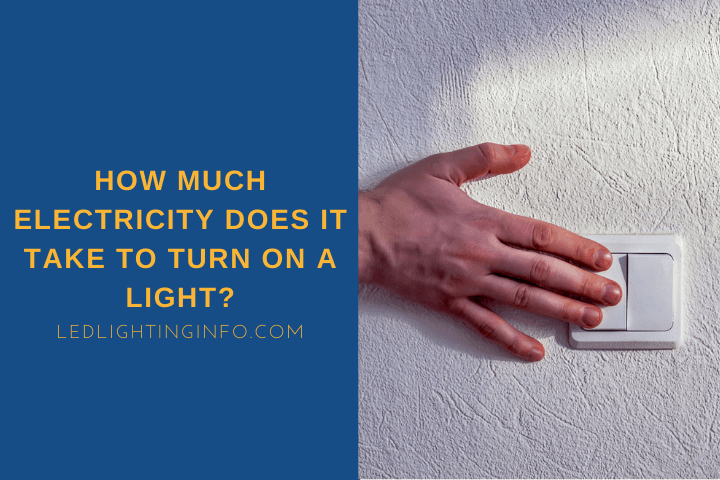The moment you switch your light on, a lot is going on behind the scenes. Flipping the light switch closes a circuit, which in turn allows electricity to flow through that circuit unhindered.
The electricity reaches the light, where it powers the bulb and makes the light turn on. What you may not realize is that, at that moment, there will be a small surge of power.
Switching a light bulb on and off will usually affect its operating lifespan. It’s the action of switching on or off that weakens the bulb itself.
However, many light bulbs will last several years as long as you’re careful with them.
How much electricity does it take to turn on a light? Is it better to leave lights on or switch them off when you’re leaving the room?
With incandescent and CFL bulbs, more power is used when switching on a bulb, but this levels out quickly. LEDs require no extra power to switch on. It’s normally best to switch off lights when not used to cut electrical costs and preserve the bulb’s lifespan.
To help you learn more about light bulb energy consumption, I’ll be detailing:
- How much energy a lightbulb uses initially
- How much energy is saved by turning a light off
- Whether or not your light bulbs last longer if left on
- Whether it’s best to leave lights on or switch them off
Does Turning Light On Use More Electricity Initially?

Some bulbs use more electricity when they’re initially switched on.
This is most notable with an incandescent bulb. A cold filament allows a faster flow of current than once properly warmed up – cold filaments have a lower resistance.
The time is minimal though – a typical 100W bulb will reach normal temperature (and resistance) in less than a tenth of a second. High wattage bulbs may take around a full second.
Fluorescent (CFL) bulbs have a similar excess of current when they’re first switched on. With these bulbs, this happens because the capacitors need to be charged initially.
LED bulbs do not require an initial surge of power. The energy-efficient light-emitting diodes are ready to work straight away, without the need to warm up to get to maximum efficiency or brightness.
Even though CFL bulbs and incandescent bulbs use more electricity at first, this isn’t worthy of consideration when you calculate your energy usage.
Even CFL bulbs, which use the most electricity, should be switched off if you’re leaving the room for more than 25 seconds to save energy – although this can reduce their lifespan, if you return soon after that.
How Much Money Does Turning The Light Off Save?

So let’s work out exactly how much money you could save by turning off the light when you leave a room.
I’ve established that turning off a bulb for 30 seconds is enough time to save energy, so let’s start with that.
Firstly, we need to know how much power the bulb uses and how much that costs. Let’s work with a 60W incandescent bulb since that’s likely to be the worst-case scenario in your home – anything else will be more efficient.
A 60W bulb uses 60 Watts of energy per hour, which is the equivalent of 0.06kWh. And we know that the standard rate of electricity in the US is 13c per 1kWh. So, if we multiply 13 cents by 0.06, you get the cost of running a 60W bulb for one hour – 0.78 cents.
A tiny amount, right?
And therefore, the amount you save when you switch off a bulb for just 30 seconds is 1/120 of that total (there are 120 half-minutes in an hour). So, switching off one bulb for 30 seconds saves you a total of 0.0065 cents.
I know these numbers are tiny but bear with me. Because that’s just one bulb, for 30 seconds.
Let’s look at how much you save when you extend that time:
| Money saved (1 bulb) for 30 seconds | Money saved (1 bulb) for 30 minutes | Money saved (1 bulb) for 1 hour |
|---|---|---|
| 0.0065 cents | 0.39 cents | 0.78 cents |
We know that last value already – it’s the cost of a bulb being used for one hour, saved. Is that realistic? Think about how many times during an evening you leave the room for a bathroom break or to grab a snack and end up having a conversation. Those times add up. One hour is likely to be conservative.
Now that’s just for one bulb. What if we were to multiply that by 4 bulbs, which is a reasonable estimate for one room with multiple fittings.
| Money saved (4 bulbs) for 30 seconds | Money saved (4 bulbs) for 30 minutes | Money saved (4 bulbs) for 1 hour |
|---|---|---|
| 0.026 cents | 1.56 cents | 3.12 cents |
And that’s just for one day. Let’s extrapolate that out over a calendar year.
| Money saved (4 bulbs) for 30 seconds, 365 times a year | Money saved (4 bulbs) for 30 minutes | Money saved (4 bulbs) for 1 hour |
|---|---|---|
| 9.49 cents | $5.69 | $11.39 |
That’s one person, in one room. If there are four of you in the family all acting the same way when they’re in that one room, you can multiply that by 4.
Even just by being careful in one room, you can save almost $50 per year by switching off the lights for a cumulative hour – do it across multiple rooms with more light bulbs and the savings will soon add up.
Do Light Bulbs Last Longer If Kept On?

The lifespan of a bulb is usually measured in hours. Different types of bulbs work in different ways, so a bulb’s lifespan will depend on the kind of bulb you’re using.
Incandescent lights are the least efficient type of light bulb. They contain a thin metal filament that will wear down over time.
The filament inside an incandescent bulb is damaged by high temperatures. Meanwhile, 90% of the energy these bulbs are using will be given off as heat.
The longer you leave this type of bulb on, the more energy you’ll be wasting and the more damage you’re doing to the filament.
Switching incandescent light bulbs on and off will reduce their lifespan, but not as much as leaving them running for hours when you don’t need to.
CFL bulbs are more dramatically impacted by being switched off and on. With these bulbs, unless you plan to leave the room for at least 10 minutes, it’s usually best to leave the light on.
LED bulbs work differently. They contain many small LEDs that will burn out over time.
An LED light bulb is expected to last around 50,000 hours. Switching an LED on and off adds stress to the capacitors, but unless the kids are flashing the bulbs on and off, normal use shouldn’t have a noticeable impact.
In short, the type of bulb you’re using should impact your behavior. If you have an LED bulb, then you can relax and save money by switching it off. If you’re using CFL bulbs, leave them on if you’re just leaving the room for a minute.
What Is Better: Keeping The Light Constantly On Or Turning It On And Off?

In most cases, it’s better to turn your lights off when you’re leaving the room.
This is especially true with LED bulbs which don’t degrade anywhere near as much as CFL bulbs. CFL bulbs add an extra challenge, so it might be best to leave the light on unless you’re going for more than 10 minutes.
Switching your lights off will save some money. You can reduce your energy bills as well as the number of times you need to buy replacement bulbs.
Switching bulbs on and off over time – no matter the type – will reduce the lifespan but unless you’re doing it every few minutes, it’s better to switch them off instead of leaving them on.
Light pollution is something you’ll also need to consider. Bright lights can disrupt ecosystems, confuse animals and impact human health – though it might be tempting to leave a light on while you sleep, this will affect sleep cycles.
The costs of leaving light bulbs on aren’t just financial, so switching off lights when you’re not in the room can have benefits beyond your energy bills.
Final Words
Ideally, the only lights on your house should be the lights in the rooms you’re using.
If you leave the room, it’s usually best to switch the lights off before you go. Only in rare circumstances – where you use CFL bulbs, and you’re just leaving the room for a moment – should you think about leaving the lights on.
LED bulbs are the most energy-efficient, have the longest lifespan, and aren’t affected by being switched off and on. This makes them the ideal choice for energy-saving endeavors.
Incandescent bulbs and CFL bulbs don’t like to be switched on and off. However, in most cases, the benefits of doing this still outweigh the slightly shortened lifespan.
Do you always remember to switch off lights when you leave the room? How much energy do you think you waste by leaving lights on around your home?
Use the comments below to share tips and information about how to remember to switch lights off.
Looking for an LED bulb but not sure what type you need?
Check out my free bulb picker and select the right bulb within few clicks.

